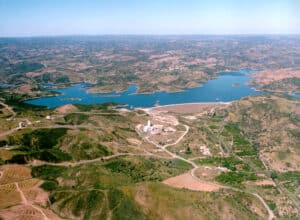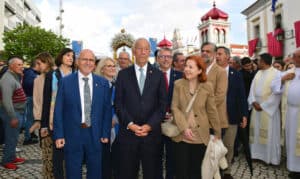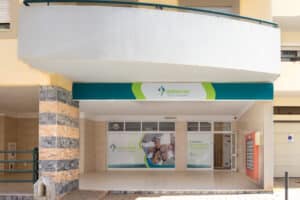… and its link with the local Neolithization Process
On Tuesday, January 9, the Algarve Archaeological Association (AAA) will be presenting two lectures, in English, by Archaeologist Dr João Saldanha. The first lecture will be at 2.30pm at the Museu do Traje in São Brás de Alportel; the second lecture will be at 6pm at the Convento de São José in Lagoa.
Dr João Saldanha will be introducing us to the process of Neolithization in Eastern Amazonia and the rise of monumentality in the area making comparisons with the process in Eurasia.
Following the successful colonisation of the globe by our species, new waves of human expansion happened during the Holocene period after the Last Ice Age, reshaping cultural, linguistic and genetic landscapes worldwide. Such expansions may have been triggered by the emergence of the Neolithization process.
The demographic and technological advantages offered by the onset of agriculture as drivers of Holocene cultural expansions are also supported by the appearance and distribution of new ideological forms of display, such as megalithic monuments.
Eurasia has always played a central role in debate relating to the Neolithization process and the rise of early forms of monumentality. Lowland South America has, however, been notably absent, due in part to the smaller amount of reliable evidence available when compared to that from Eurasia.
In this lecture, João wants to fill the gap by comparing the links between the increase of food production systems, associated increase in population growth rate and the rise and forms of monumentality in Eurasia and Lowland South America. He will be looking at monumental funerary structures from a specific region of the Amazon, the eastern coast of Guianas. He will be looking at the period from 3,000BP, the beginning of the Amazonian “Neolithic”, when the general rule seems to be the use of shallow pits with single burials accompanied by rare and scanty grave goods, until 1,500BP when death is associated with highly elaborate funerary urns deposited in earth, stone or wooden monuments.
The changes will be looked at in the context of evolving networks of relationships occurring from the beginning of the Amazonian “Neolithic” Period until the contact with the Europeans. He will argue that encircling ditches, and megalithic and timber circles containing funerary pits appear suddenly on the landscape from 1,100BP signalling a significant change.
He will argue that the people that built such funerary structures sought more elaborate forms of expression of identity and group affiliation, resulting in different types of monuments and stylistically hybrid ceramics with high aesthetic appeal that start to dominate the archaeological landscape of the region.
Dr João Saldanha is currently an Associate Researcher at the Centro de História da Arte e Investigação Artistica (CHAIA) of University of Évora and a hired Archaeologist at the Museum of London Archaeology (MOLA). His research specialisation focuses on the origins of monumentality in prehistoric times, specifically in Amazonia and Iberia, using a comparative archaeology approach. He is particularly interested in integrating various subfields of cultural evolutionary theory and methodology. His goal is to integrate different approaches to investigate the connections between demography, population movements, social and cultural patterns and processes, in order to understand the origins of monuments in prehistory. He received his PhD degree in 2017 from the Museum of Archaeology and Ethnology at the University of São Paulo, Brazil. He has worked as an independent archaeologist in the Algarve, coordinating commercial archaeological projects in Lagos, Portimão, Silves and Albufeira. He has also served as a professor at the University de São Paulo.
Non-members are welcome to attend AAA lectures for a €5 admission fee, with all money raised by the AAA being used for archaeological grants and speakers. For more information, contact algarvearchass@gmail.com, visit arquealgarve.weebly.com or Facebook ‘Algarve Archaeological Association’. Please check the website or Facebook page for any last-minute changes.
By JANE ROBERTSON


























